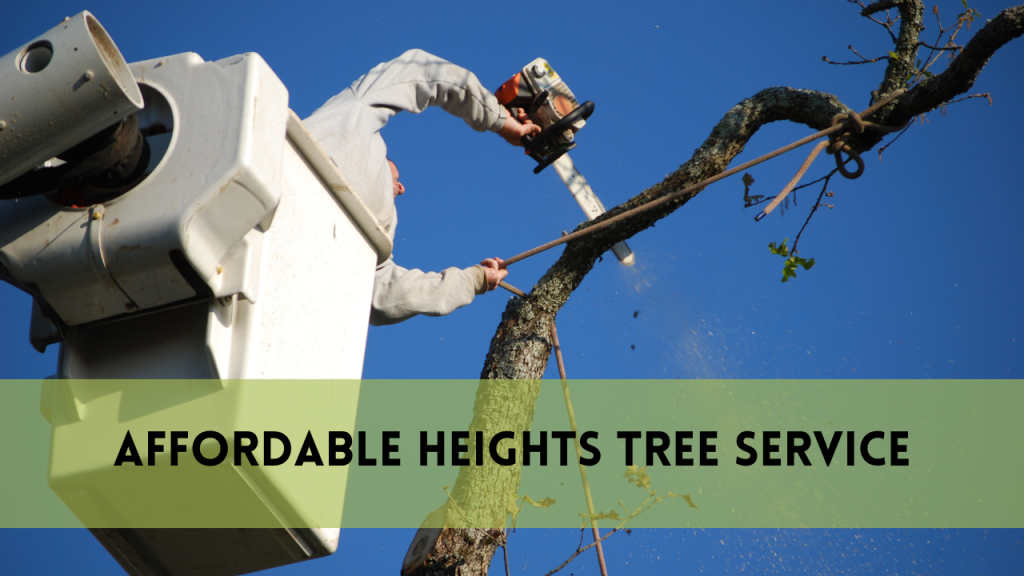Tree Limb Removal
Arborist Heights invites you to an informative journey into the world of tree limb removal, a critical activity in the field of arboriculture. As seasoned tree care specialists, we understand the delicate balance between landscape aesthetics and tree health. This comprehensive book aims to provide you with the necessary knowledge and skills for effective and responsible tree limb removal. Arborist Heights provides insights on the importance of pruning, signals that suggest the need for limb removal, and best methods to ensure the health of your trees. Our goal goes beyond gardening aesthetics; we want to develop a better awareness of the symbiotic relationship between trees and their caretakers. Join us on this journey where arboriculture meets the arts, and discover how to improve the health of your trees while also enhancing your outdoor settings.
Understanding Tree Limb Removal
In the field of arboriculture, tree limb removal emerges as a subtle art form that necessitates a fine balance between beauty and tree health. Arborist Heights allows you to explore the significance of this profession, revealing its transforming impact on both landscapes and tree health.
At the heart of tree limb removal is the art of pruning. Arborist Heights highlights the importance of pruning in enhancing a tree’s structural integrity, promoting correct growth, and reducing disease risk.
Signs Your Tree Needs Limb Removal
Understanding when to consider tree limb removal is critical to the health and longevity of your trees. Arborist Heights offers excellent insights into spotting the signs that suggest the need for this critical discipline.
Deadwood: Dead or decaying branches endanger the general health of a tree. Arborist Heights recommends regular examinations for deadwood, since removing it not only improves aesthetics but also reduces disease spread.
Crossing Branches: Rubbing branches can cause sores that serve as entry places for pests and illnesses. Arborist Heights suggests removing limbs to avoid such confrontations and promote better growth.
Safety hazards: Overhanging branches can be hazardous, particularly during storms. Arborist Heights promotes alertness in recognizing branches that could potentially fall and cause damage, emphasizing the significance of limb removal for safety.
Unbalanced Canopy: A lopsided canopy can indicate structural difficulties. Arborist Heights advocates selective limb reduction to keep the tree structure balanced and visually appealing.
Recognizing these signals enables you to make informed decisions about the health of your trees, resulting in a better and safer environment.
Best Practices for Safe Tree Removal
Arborist Heights stresses the safety and well-being of both trees and their caregivers, providing key best practices for safe and effective limb removal. Follow our expert advice to achieve a balanced balance of landscape beauty and tree health.
Tools: Start by selecting the necessary tools for the work. Arborist Heights suggests using sharp and clean pruning shears, loppers, or a pruning saw, depending on the size of the limb. Quality tools ensure precision while minimizing stress on the tree.
Assess the Branch Size: Before removing a branch, consider its size. Arborist Heights recommends removing smaller branches with pruning shears and larger branches with loppers or a pruning saw. This deliberate strategy reduces the danger of accidents and tree damage.
Practice Three-Cut Technique: Arborist Heights recommends using the three-cut technique on larger branches. Begin with an undercut, then an uppercut, and finally a clean cut. This approach prevents bark tearing while also promoting optimal healing.
Mindful of Surroundings: Before beginning limb removal, check the surrounding area for potential obstructions. Arborist Heights emphasizes the need to maintain a clear area to avoid accidents and permit the safe fall of severed limbs.
Timing Matters: Arborist Heights recommends removing limbs during the tree’s dormant season, which is often late winter or early spring. This time reduces stress for the tree and encourages faster healing.
By following these best practices, you may improve the health and vitality of your trees while also creating a safe environment for everyone involved. Arborist Heights promotes a thorough and strategic approach to limb removal, which benefits both your landscaping and the health of your trees.
Can I trim my bonsai at any time of year?
Absolutely! For the best outcomes, however, it is recommended that you focus on seasonal trends. Trimming is usually best done in the spring or early fall.
How frequently should I trim my bonsai tree?
The frequency is determined by your tree’s individual demands. Minor cuts can be done at any time of year, but substantial shaping should be done once a year.
What happens if I over-prune my bonsai?
Overpruning can damage the tree and limit its growth. It is critical to achieve a balance and follow specified cutting standards.
Is it necessary to use special bonsai pruning tools?
While not required, using the proper tools ensures accuracy and reduces stress on the tree. For the best results, use high-quality pruning shears and concave cutters.
Can I shape my bonsai into any shape?
While creativity is encouraged, you should consider your bonsai’s natural development patterns. Use its inherent structure to produce a harmonious and visually appealing shape.
How can I grow a thick canopy on my bonsai tree?
Regular trimming, combined with proper sunlight exposure and watering, promotes dense foliage. Be patient, and your bonsai will develop a lush and healthy canopy.
Conclusion
As we continue our fascinating trip into the art and science of tree limb removal with Arborist Heights, it’s clear that this discipline is more than just landscaping; it’s a tribute to the delicate balance of beauty and tree health. We hope that by exploring the necessity of pruning, signs that require limb removal, and best practices for safety, you will be able to make informed decisions about your trees. Arborist Heights emphasizes the symbiotic link between caregivers and trees, highlighting the importance of intentional and deliberate limb removal. Adopting our advised procedures not only beautifies your landscape, but also helps to ensure the longevity and health of your prized trees.



